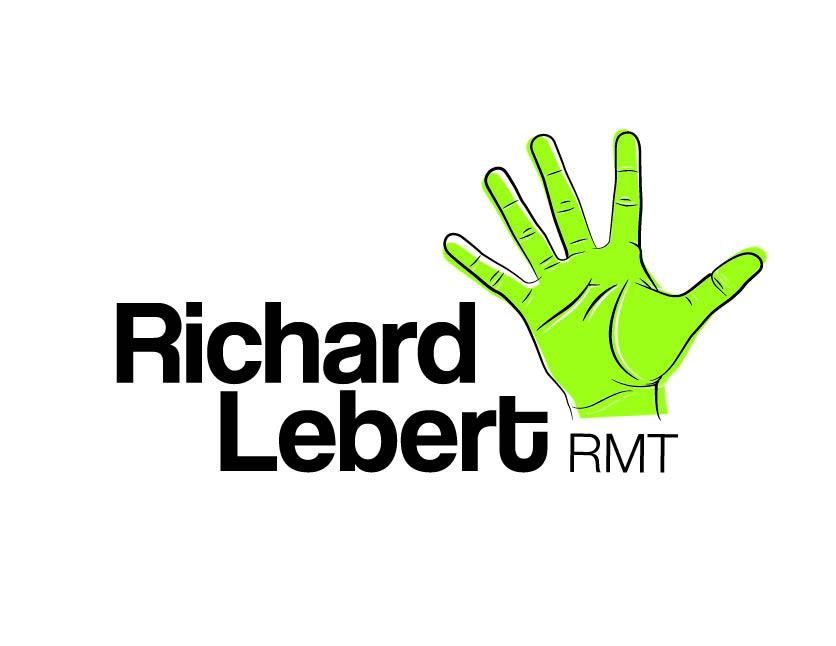Complementary and integrative medicine in the management of headache
/Acupuncture Research Has Matured
A recent State of the Art Review published in The British Medical Journal (Chen et al. 2017) takes a critical look at cupping, massage, acupuncture and yoga, but does not throw the baby out with the bathwater. This review along with recent recommendations from The American College of Physicians (Chou et al. 2017, Qaseem et al. 2017) and Center for Disease Control (Frieden et al. 2016) represent a monumental shift in pain management.
Physicians, now more than ever are recommending conservative treatment including massage, acupuncture and exercise for patients suffering from pain.
Acupuncture for Headaches
Along those line, The British Medical Journal just published a State of the Art Review looking at the evidence base surrounding massage and acupuncture for patients who suffer from headaches (Millstine et al. 2017). It found that acupuncture and massage has been shown to be a therapeutic intervention that may lower headache frequency and intensity.
My first recommendation for those who suffer from migraines is to work with a physician to develop strategies to manage symptoms. Then treatment programs should be implemented based on patient-specific assessment findings and patient tolerance.
If a patient is interested in using acupuncture to manage headache symptoms there is actually a larger body of scientific evidence for acupuncture than most people are aware of. There is supporting evidence from The Cochrane Collaborative, Canadian Medical Association and other high quality systematic reviews:
• Chronic pain (MacPherson et al. 2017, Vickers et al. 2012)
• Acute pain (Murakami et al. 2017)
• Tension-type headaches (Busse et al. 2017, Linde et al. 2016)
• Migraines (Busse et al. 2017, Linde et al. 2016, Yang et al. 2016)
Mechanism of Action:
If you use Occam's razor, the insertion of an acupuncture needle is a form of novel stimuli, that functions by sending anti-nociceptive input to the neuroimmune system. This contributes to a number of physiological changes across different areas of the peripheral and central nervous systems, including peripheral receptors, dorsal horn of the spinal cord, brainstem, sensorimotor cortical areas, and the mesolimbic and prefrontal areas (Chen et al. 2017).
More to Explore
There is a growing body of evidence to support the use of acupuncture for people who suffer from migraines, so in this post I have taken the time to organize some of the recent research on the topic.
Books
Migraine Brains and Bodies: C.M. Shifflett
Migraines: More than a headache Elizabeth Leroux
The Migraine Brain- Carolyn Bernstein
Related Research
Borea, P. A., Gessi, S., Merighi, S., & Varani, K. (2016). Adenosine as a Multi-Signalling Guardian Angel in Human Diseases: When, Where and How Does it Exert its Protective Effects? Trends in Pharmacological Sciences.
https://www.ncbi.nlm.nih.gov/pubmed/26944097
Bove, G. (2013). Lending a hand to migraine. Pain.
https://www.ncbi.nlm.nih.gov/pubmed/23707681
Busse, J.W., Craigie, S., Juurlink, D.N, ... Guyatt GH. (2017). Guideline for opioid therapy and chronic noncancer pain. CMAJ.
https://www.ncbi.nlm.nih.gov/pubmed/28483845
Chae, Y., Olausson, H. (2017). The role of touch in acupuncture treatment. Acupunct Med.
https://www.ncbi.nlm.nih.gov/pubmed/28151404
Chen, L., Michalsen, A. (2017). Management of chronic pain using complementary and integrative medicine. BMJ.
https://www.ncbi.nlm.nih.gov/pubmed/28438745
Coeytaux, R. R., & Befus, D. (2016). Role of Acupuncture in the Treatment or Prevention of Migraine, Tension-Type Headache, or Chronic Headache Disorders. Headache: The Journal of Head and Face Pain.
https://www.ncbi.nlm.nih.gov/pubmed/27411557
Frieden, T. R., & Houry, D. (2016). Reducing the Risks of Relief — The CDC Opioid-Prescribing Guideline. New England Journal of Medicine.
https://www.ncbi.nlm.nih.gov/pubmed/26977701
Jacobs, B., & Dussor, G. (2016). Neurovascular contributions to migraine: Moving beyond vasodilation. Neuroscience.
https://www.ncbi.nlm.nih.gov/pubmed/27312704
Ji, R.R., Chamessian, A., Zhang, Y.Q. (2016). Pain regulation by non-neuronal cells and inflammation. Science.
https://www.ncbi.nlm.nih.gov/pubmed/27811267
Linde, K., Allais, G., Brinkhaus, B., Fei, Y., Mehring, M., Shin, B., . . . White, A. R. (2016). Acupuncture for the prevention of tension-type headache. Cochrane Database of Systematic Reviews.
https://www.ncbi.nlm.nih.gov/pubmed/27092807
Linde, K., Allais, G., Brinkhaus, B., Fei, Y., Mehring, M., Vertosick, E. A., . . . White, A. R. (2016). Acupuncture for the prevention of episodic migraine. Cochrane Database of Systematic Reviews.
https://www.ncbi.nlm.nih.gov/pubmed/27351677
Langevin, H. M. (2014). Acupuncture, Connective Tissue, and Peripheral Sensory Modulation. Critical Reviews in Eukaryotic Gene Expression.
https://www.ncbi.nlm.nih.gov/pubmed/25072149
MacPherson, H., Vickers, A., Bland, M., Torgerson, D., Corbett, M., Spackman, E., ..., Watt, I. (2017). Acupuncture for chronic pain and depression in primary care: a programme of research. Southampton (UK): NIHR Journals Library.
https://www.ncbi.nlm.nih.gov/pubmed/28121095
Millstine, D., Chen, C., Bauer, B. (2017). Complementary and integrative medicine in the management of headache. BMJ.
https://www.ncbi.nlm.nih.gov/pubmed/28512119
Murakami, M., Fox, L., Dijkers, M.P. (2017). Ear Acupuncture for Immediate Pain Relief-A Systematic Review and Meta-Analysis of Randomized Controlled Trials. Pain Med.
https://www.ncbi.nlm.nih.gov/pubmed/28395101
Nahin, R. L., Boineau, R., Khalsa, P. S., Stussman, B. J., & Weber, W. J. (2016). Evidence-Based Evaluation of Complementary Health Approaches for Pain Management in the United States. Mayo Clinic Proceedings.
https://www.ncbi.nlm.nih.gov/pubmed/27594189
Sawynok, J. (2016). Adenosine receptor targets for pain. Neuroscience.
https://www.ncbi.nlm.nih.gov/pubmed/26500181
Salazar, T.E., Richardson, M.R., Beli, E., ... Grant, M.B. (2017). Electroacupuncture Promotes CNS-Dependent Release of Mesenchymal Stem Cells. Stem Cells.
https://www.ncbi.nlm.nih.gov/pubmed/28299842
Schwedt, T. J. (2014). Chronic migraine. BMJ.
https://www.ncbi.nlm.nih.gov/pubmed/24662044
Tang, Y., Yin, H., Rubini, P., & Illes, P. (2016). Acupuncture-Induced Analgesia: A Neurobiological Basis in Purinergic Signaling. The Neuroscientist.
http://www.ncbi.nlm.nih.gov/pubmed/27343858
Vickers, A. J., Cronin, A. M., Maschino, A. C., Lewith, G., Macpherson, H., Foster, N. E., . . . Collaboration, F. T. (2012). Acupuncture for Chronic Pain. Archives of Internal Medicine.
https://www.ncbi.nlm.nih.gov/pubmed/22965186
Volkow, N.D., McLellan, A.T. (2016). Opioid Abuse in Chronic Pain--Misconceptions and Mitigation Strategies. N Engl J Med.
https://www.ncbi.nlm.nih.gov/pubmed/27028915
Yang, Y., Que, Q., Ye, X., Zheng, G.h. (2016). Verum versus sham manual acupuncture for migraine: a systematic review of randomised controlled trials. Acupunct Med.
https://www.ncbi.nlm.nih.gov/pubmed/26718001
Zhang, R., Lao, L., Ren, K., & Berman, B. M. (2014). Mechanisms of Acupuncture Electroacupuncture on Persistent Pain. Anesthesiology. (OPEN ACCESS)
https://www.ncbi.nlm.nih.gov/pubmed/24322588
Zhao, L., Chen, J., Li, Y., ... Liang, F. (2017). The Long-term Effect of Acupuncture for Migraine Prophylaxis A Randomized Clinical Trial. JAMA Intern Med.
https://www.ncbi.nlm.nih.gov/pubmed/28241154


